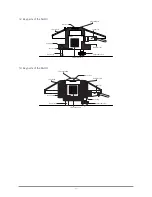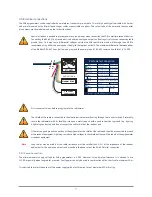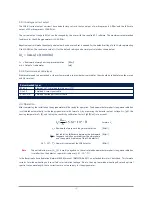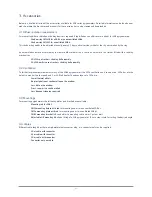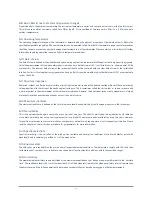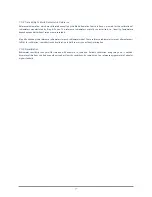
For the SGR4 the effect of each parameter on the sensitivity can be shown separately. The non-linearity error, the sensitivity
variation with irradiance, is the same for any SGR4.
Non-linear sensitivity variation with irradiance of a SGR4 pyrgeometer
2.6 Maintenance
Once installed the pyrgeometer needs little maintenance. The window must be cleaned and inspected regularly, ideally every
morning. On clear windless nights the window temperature of horizontally placed pyrgeometers will decrease, even to the dew point
temperature of the air, due to infrared radiation exchange with the cold sky. (The effective sky temperature can be 30°C lower than
the ground temperature). In this case dew, glazed frost or hoar frost can be precipitated on the top of the window and can stay there
for several hours in the morning. An ice cap on the window is a strong diffuser and increases the pyrgeometer signal drastically, up
to 100% in the first hours after sunrise. Hoar frost disappears due to solar radiation during the morning, but should be wiped of as
soon as possible manually.
The window of the pyrgeometer can be ventilated continuously by a heated blower to keep the window above the dew point
temperature. The need for heating strongly depends upon local climatological circumstances. Generally, heating is advised during
cold seasons when frost and dew can be expected. The Kipp & Zonen CVF4 ventilation unit is specially designed for unattended
operation under most weather conditions and has a choice of heating levels.
Note
The SGR3 pyrgeometer can be used with the CVF4 ventilation unit but is less effective.
A periodic check is to ensure that the pyrgeometer is level. The pyrgeometer sensitivity changes with time and with exposure to
radiation. Calibration every two years is advised.
To keep the detector and electronics dry and to prevent condensation forming inside the windows with temperature changes an
internal desiccant is used to absorb humidity within the pyrgeometer and lasts for 10 year. The desiccant will be exchanged when
these instruments comes back to a Kipp & Zonen service location for recalibration.
Horizontal
90 degrees tilt
-250
-1
-0.5
0
0.5
1
0
Irradiance [W/m
2
]
Non-linearity
Sensitivity var
iation
[%]
250
21




